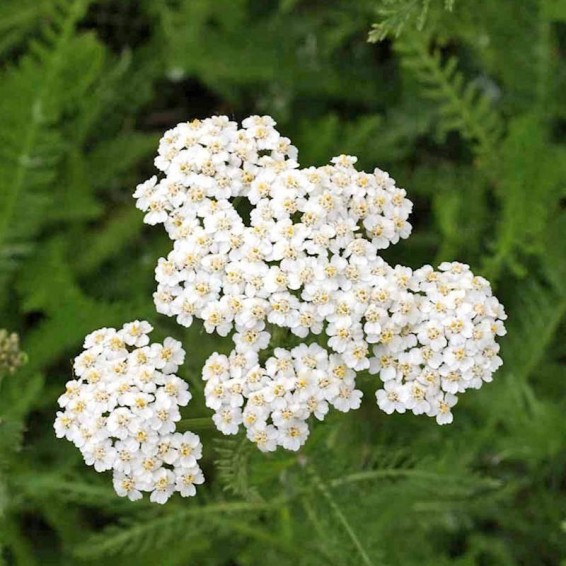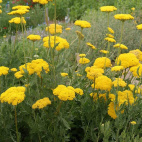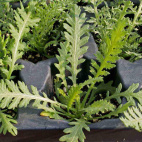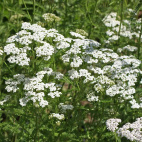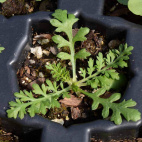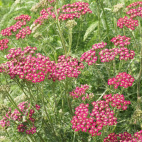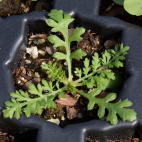Western Yarrow Seeds
- HOW TO GROW
- FAST FACTS
- REVIEWS
HOW TO GROW
Sowing: Direct sow western yarrow seeds in fall or early spring; fall planted seed will remain dormant until spring. To start the seeds indoors, plant Achillea Millefolium Occidentalis seeds just below the surface of the soil since they need light to germinate. Keep the soil temperature at 65-75 degrees F, but out of the hottest rays of sunlight.
Growing: While the young plants should be watered to help them establish a deep root system, too much watering of mature plants can cause stem and root rot or mildew. This species grows best in sandy or well drained soil, and tolerates drought conditions. Since yarrow tends to flop over in fertile soil or shade, staking may be needed; this also protects the plant's fragile stems in high winds. Deadhead the wilted blossoms often for continued blooming. After the plant has finished blooming, cut the plant down to its lower leaves for healthy spring growth. When the plant becomes 3-4 years old, it will benefit from being dug up and divided in the early spring or fall. Because yarrow can become invasive through the spread of roots and its reseeding habit, care should be taken to control the spread of the plant. This can be done by putting a barrier underground surrounding the plant's roots, or by growing the plant in large container. This plant attracts butterflies and beneficial insects as well as repelling deer and rabbits, and grows well in borders or large containers. As a companion plant with herbs, it increases their fragrance, flavor, and essential oils.
Harvesting: Gather leaves and flowers as soon as they mature. Harvest the whole stem as soon as it begins to bloom; bundle the stems and hang them upside down to dry away from direct sunlight. Yarrow blossoms make good cut flowers, and when dried they hold their color well. Keep in mind that if the flowers have been open for more than a day, they will go to seed as they dry. Individual blossoms or leaves can also be harvested and spread out to dry in a protected location.
Seed Saving: Allow the flower heads to mature and begin to dry; the stem will start to turn brown. Remove the heads and spread them out to dry out of direct sunlight, then rub them lightly to release Achillea Millefolium Occidentalis seeds. Store western yarrow seeds in a cool, dark place.
FAST FACTS
Latin Name: Achillea millefolium occidentalis
Species Origin: US Native Wildflower
Type: Native Wildflowers
Life Cycle: Perennial
USDA Zones: 1, 2, 3, 4, 5, 6, 7, 8, 9, 10, 11, 12
US Regions: California, Mountain, Arid/Desert, Plains/Texas, Midwest, Northern, Northeast, Southeast
Seeds per Ounce: 175,000
Stratification: No Stratification
Germination Ease: No Stratification
Sunlight: Full Sun
Height: 24 Inches
Color: White
Bloom Season: Blooms Early Summer, Blooms Late Summer
Uses: Attracts Pollinators, Attracts Honeybees, Attracts Butterflies, Aromatic, Cut Flowers, Dried Flowers, Deer Resistant
Awesome
Thank you for my purchase my seeds look perfect. I'm just starting to get them ready for planting. And with my issue I called and it was immediately taken care of.
Hope they grow here
Love the packaging. I won't plant these until late-fall/early-winter and then won't know until next year.
Seeds
Love the yarrow seeds and how they spread.
Seeds For Pollinators
Love this source for all seeds. Trustworthy supplier for any order . Extremely satisfied customer.
DESCRIPTION
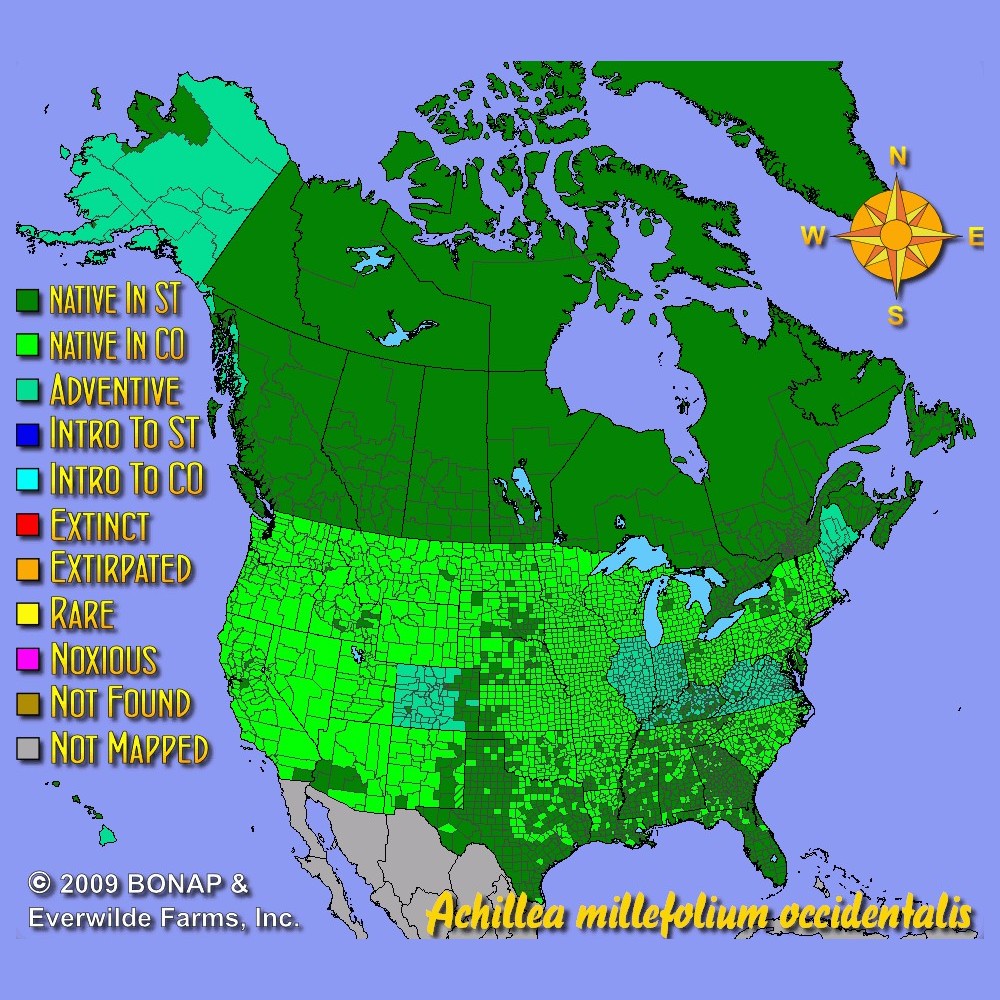
HOW TO GROW
Sowing: Direct sow western yarrow seeds in fall or early spring; fall planted seed will remain dormant until spring. To start the seeds indoors, plant Achillea Millefolium Occidentalis seeds just below the surface of the soil since they need light to germinate. Keep the soil temperature at 65-75 degrees F, but out of the hottest rays of sunlight.
Growing: While the young plants should be watered to help them establish a deep root system, too much watering of mature plants can cause stem and root rot or mildew. This species grows best in sandy or well drained soil, and tolerates drought conditions. Since yarrow tends to flop over in fertile soil or shade, staking may be needed; this also protects the plant's fragile stems in high winds. Deadhead the wilted blossoms often for continued blooming. After the plant has finished blooming, cut the plant down to its lower leaves for healthy spring growth. When the plant becomes 3-4 years old, it will benefit from being dug up and divided in the early spring or fall. Because yarrow can become invasive through the spread of roots and its reseeding habit, care should be taken to control the spread of the plant. This can be done by putting a barrier underground surrounding the plant's roots, or by growing the plant in large container. This plant attracts butterflies and beneficial insects as well as repelling deer and rabbits, and grows well in borders or large containers. As a companion plant with herbs, it increases their fragrance, flavor, and essential oils.
Harvesting: Gather leaves and flowers as soon as they mature. Harvest the whole stem as soon as it begins to bloom; bundle the stems and hang them upside down to dry away from direct sunlight. Yarrow blossoms make good cut flowers, and when dried they hold their color well. Keep in mind that if the flowers have been open for more than a day, they will go to seed as they dry. Individual blossoms or leaves can also be harvested and spread out to dry in a protected location.
Seed Saving: Allow the flower heads to mature and begin to dry; the stem will start to turn brown. Remove the heads and spread them out to dry out of direct sunlight, then rub them lightly to release Achillea Millefolium Occidentalis seeds. Store western yarrow seeds in a cool, dark place.
FAST FACTS
Latin Name: Achillea millefolium occidentalis
Species Origin: US Native Wildflower
Type: Native Wildflowers
Life Cycle: Perennial
USDA Zones: 1, 2, 3, 4, 5, 6, 7, 8, 9, 10, 11, 12
US Regions: California, Mountain, Arid/Desert, Plains/Texas, Midwest, Northern, Northeast, Southeast
Seeds per Ounce: 175,000
Stratification: No Stratification
Germination Ease: No Stratification
Sunlight: Full Sun
Height: 24 Inches
Color: White
Bloom Season: Blooms Early Summer, Blooms Late Summer
Uses: Attracts Pollinators, Attracts Honeybees, Attracts Butterflies, Aromatic, Cut Flowers, Dried Flowers, Deer Resistant
Reviews
Review
Awesome
Thank you for my purchase my seeds look perfect. I'm just starting to get them ready for planting. And with my issue I called and it was immediately taken care of.
Review
Hope they grow here
Love the packaging. I won't plant these until late-fall/early-winter and then won't know until next year.
Review
Seeds
Love the yarrow seeds and how they spread.
Review
Seeds For Pollinators
Love this source for all seeds. Trustworthy supplier for any order . Extremely satisfied customer.
Also Consider These:
-
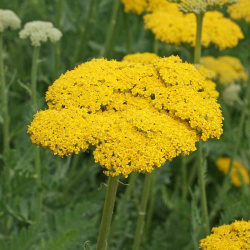 Gold Yarrow Seeds
Achillea filipendulina
Fragrant, fern-like foliage, and cheerful, long-lasting flowers make this an enduring favorite. It is quite a bit taller and brighter than the Common White Yarrow. Beautiful en masse, or as a border plant.Quick View$3.48 Pkt - $16.57 / Oz
Gold Yarrow Seeds
Achillea filipendulina
Fragrant, fern-like foliage, and cheerful, long-lasting flowers make this an enduring favorite. It is quite a bit taller and brighter than the Common White Yarrow. Beautiful en masse, or as a border plant.Quick View$3.48 Pkt - $16.57 / Oz -
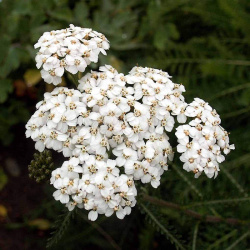 On Sale!
White Yarrow Seeds
Achillea millefolium
This wildflower is a common sight across the US and is often found growing in dry soils. The foliage is aromatic, and the long-lasting flowers work well for dried arrangements. Yarrow is also a valuable species for its herbal properties.Quick View$2.98 Pkt - $8.20 / Oz
On Sale!
White Yarrow Seeds
Achillea millefolium
This wildflower is a common sight across the US and is often found growing in dry soils. The foliage is aromatic, and the long-lasting flowers work well for dried arrangements. Yarrow is also a valuable species for its herbal properties.Quick View$2.98 Pkt - $8.20 / Oz -
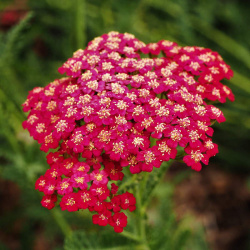 Red Yarrow Seeds
Achillea millefolium rubra
Fragrant foliage and cheerful, long-lasting flowers make this an enduring favorite. Try this variety if you want to add color to a dry area. Yarrow is also valued for its herbal properties.Quick View$3.48 Pkt - $18.77 / Oz
Red Yarrow Seeds
Achillea millefolium rubra
Fragrant foliage and cheerful, long-lasting flowers make this an enduring favorite. Try this variety if you want to add color to a dry area. Yarrow is also valued for its herbal properties.Quick View$3.48 Pkt - $18.77 / Oz




